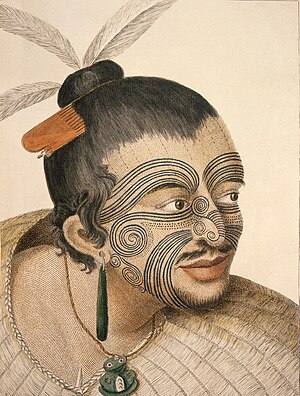 Image via Wikipedia
Image via WikipediaMerged on his spinal column and at the back of one knee and on one ankle, the Ice Man had more or less fifty-seven tattoos. It is impossible to do further than speculate as to the specific reason for them, it most certainly exhibits that tattoos aren't unique to present eras nor to the individuals in the present-day world. Because the Ice Man was the oldest mummified human remains found in Europe, modern day tattoo fans have history on their side - there's nothing whatever new about tattoos.
In other time-periods, tattoos also served dedicated purposes. Going the furthest back in American history, assorted Native American tribes used tattoos; it had been primarily for the goal of showing their rank to one's individual tribe. For the Polynesians, tattooing was a means of linking genealogy and family history; every individual had his own distinct tattoos to indicate the account of his family. Among the earliest explorers around the American continent are said to have gotten this background from the Polynesians' forms of tattoos.
Two of the oldest Egyptian mummies were discovered to have had tattoos. These tattoos, that are only found on female mummies, consist of designs of lines, dots and dashes. As the women themselves were connected to ritualistic practices, it is assumed the tattoos that they had were in some way representative of that fact. It is just speculation on the parts of the researchers, due to their knowledge of the lifestyles of that episode in time.
Although Oriental symbols are indisputably fashionable for tattoos in America, it's not commonly known that both the Japanese and Chinese cultures have held a powerful opposition with the occupation of tattooing all through history. With both public and religious viewpoints agreeing that tattooing is something that should not be done, it continues to be broadly held to be a means of contaminating one's body. For the ancient Chinese, tattooing was used as a punishment for criminal practice, placing this kind of evident symbols on an individual to forever label him as a criminal.
![Reblog this post [with Zemanta]](http://img.zemanta.com/reblog_e.png?x-id=cf7b7ec6-5ac5-4fd9-bca4-faeaf4ac4b6f)
No comments:
Post a Comment